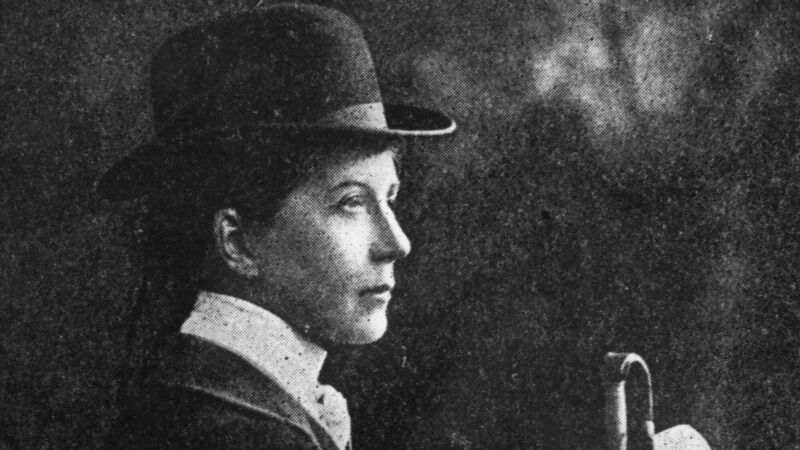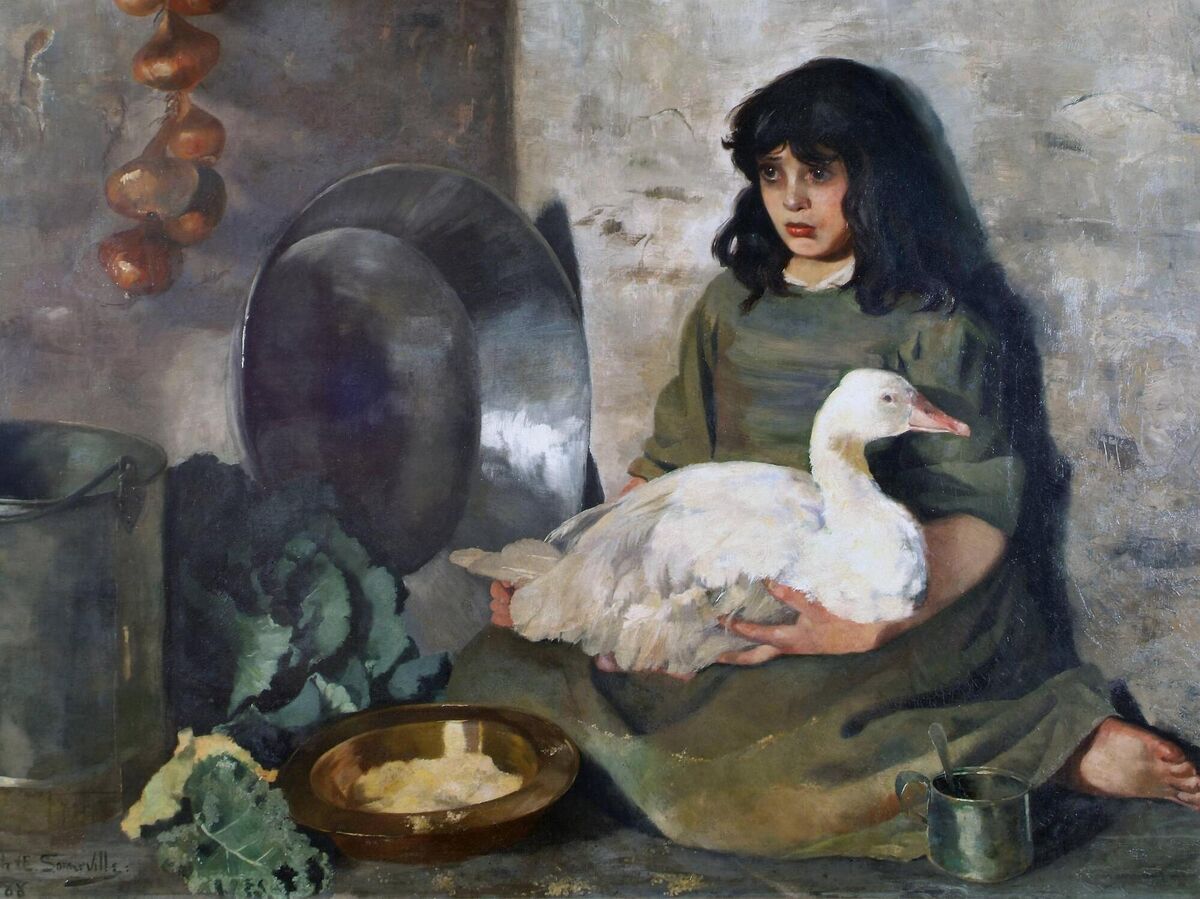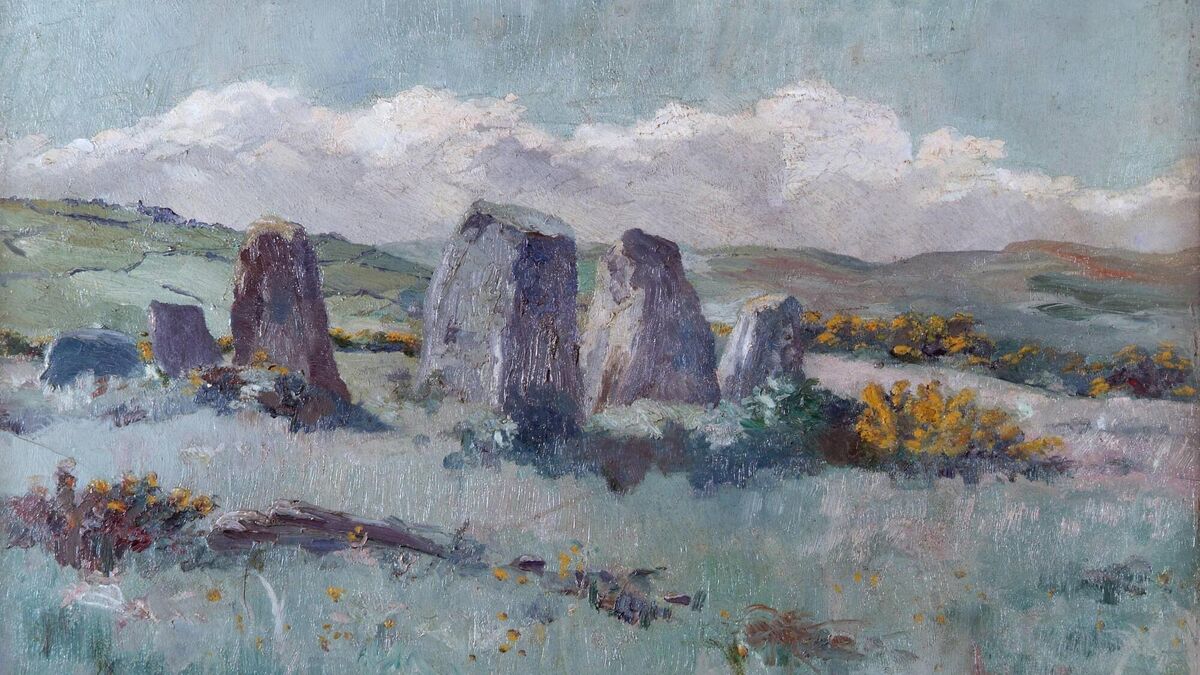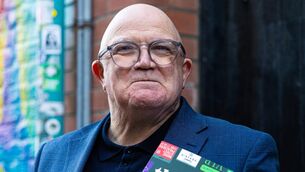Edith Somerville: West Cork woman who was ahead of her time

An exhibition of Edith Somerville's art is currently on at the Crawford in Cork. Picture: Hulton Archive/Getty Images
Even now, 72 years after her passing, there is much that remains mysterious about Edith Somerville, not least her relationship with her second cousin and literary partner, Violet Martin. As Somerville and Ross, the pair published 13 travel books and novels, including such classics as The Real Charlotte and Some Experiences of an Irish RM (adapted for a TV series in the 1980s).
Somerville and Martin were suffragists, and served respectively as president and vice-president of the radical Munster Women’s Franchise League, campaigning ardently for women’s right to vote. Neither married or had children, which gave rise to speculation about their sexuality.
Somerville appears to have been the more domineering of the two; one biographer portrayed her as a man-hating lesbian, while another went to considerable lengths to claim otherwise.
Whatever her orientation, Somerville was certainly a textbook example of what was known in the late 19th century as a New Woman - a strong-willed, independent-minded individual who refused to be limited by expectations based on her sex.
Born in Corfu in 1858, she grew up the eldest of eight children in Castletownshend, Co Cork. Her family were well-to-do Ascendency landowners, and she attended Alexandra College in Dublin. Thereafter, she pursued an early interest in painting, training at Westminster School of Art in England, and the Académie Colarossi and the Académie Delécluse in Paris, France.
“She didn’t study consistently,” says Dr Michael Waldron, assistant curator of Collections and Special Projects at the Crawford Art Gallery in Cork. “She just did a term here and there. But still, it was obvious she had serious ambitions as an artist.”

Waldron is curator of the exhibition, Edith Somerville: Observations, currently on at the Crawford. The centrepiece is Somerville’s 1888 painting in oils, The Goose Girl, which has long been a favourite with visitors to the gallery.
“This time last year,” Waldron explains, “we bought a sketch of the model for The Goose Girl, a young girl named Maryanne, that Somerville did in preparation for the painting, and we decided to organise an exhibition of the seven works of hers we now have in our collection.”
Somerville was twenty-eight when she first met Violet Martin, from Ross, Co Galway. Waldron doubts their relationship was romantic; more likely, they simply enjoyed each other’s company. They journeyed around Europe together; Observations includes a simple pencil drawing of Martin that Somerville dashed off in Denmark in 1890. The two published accounts of their adventures, illustrated with Somerville’s sketches.
Somerville’s interests were many. As well as writing and painting, she loved hunting, and in 1903 became the first female Master of Hounds in the country, leading out the West Carbery Foxhounds.
Also, she often accompanied her brother Boyle, an amateur archaeologist, on his surveys of West Cork antiquities. She had her own Kodak camera, and took many photographs on these expeditions. A visit to Drombeg Stone Circle, near Glandore, inspired the only other painting in the exhibition, a small undated work in oils called A Holy Place of the Druids.
Castletownshend was always the one place Somerville considered home. As their literary partnership flourished, she and Martin set up home at Drishane House, where they lived and worked together until Martin’s death, aged 53, in December 1915.
The relationship was not always idyllic. “Somerville had nationalist sympathies, and supported Home Rule, whereas Violet Martin was very much a Unionist. So they differed on Irish politics, and argued a lot about that. But that was the nature of their relationship, they argued about their books as well, but they were always very productive.”
Martin’s early death left Somerville distraught, but she continued not only to write, but to publish under the names Somerville and Ross. “Seances were popular among the literary set at the time, and Somerville claimed that Martin continued to collaborate with her from beyond the grave.” Somerville experienced another tragedy in 1936, when Boyle was shot dead by the IRA at his home in Castletownshend. A former vice-admiral in the British Royal Navy, he seems to have been targeted for writing letters of reference for local youths applying to join the services.

“Edith Somerville commissioned the sculptor Séamus Murphy to carve a stone bench in Castletownshend in his memory,” says Waldron. “She also commissioned Harry Clarke to produce stained glass windows for St Barrahane’s Church in the village, and she herself designed a mosaic to commemorate Violet Martin.”
Somerville lived to 91. “Towards the end of her life, she said she regretted she had not spent less time hunting, and more time painting.”
She asked to be buried next to Martin, a task that, when the time came, proved far more difficult than she might have imagined. “When they went to dig Somerville’s grave, they discovered it was solid rock. They had to go to the garda station to get some dynamite to blow it up. The explosion was so great that it damaged Violet Martin’s headstone, but it was generally agreed that Somerville would have enjoyed the commotion.”
Martin’s headstone was ultimately repaired. A photograph in the exhibition shows the simple rock that marks Somerville’s own grave beside it. “It echoes the stones in the circle at Drombeg she’d painted all those years before.”
Author, artist, photographer, hunter, spiritualist; there seems to have been no end to Somerville’s passions. As Waldron recalls, she was also a farmer, and a progressive one at that. “One last thing Edith Somerville can lay claim to is the introduction of Friesian cattle to Ireland. Apparently, she and her sister imported a herd of twenty-five Friesians, and they multiplied from there. They’re everywhere today.”
- Edith Somerville: Observations is at the Crawford Art Gallery, Cork, until December 5




